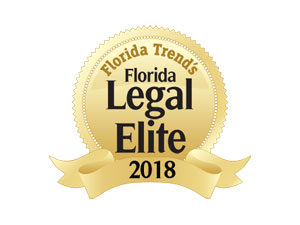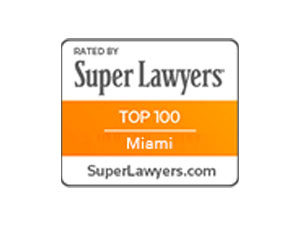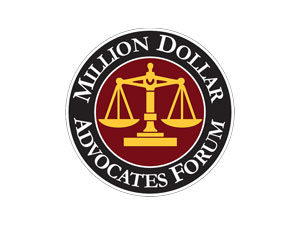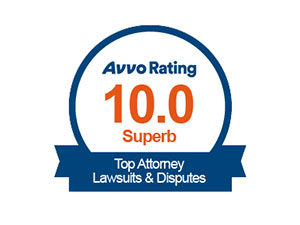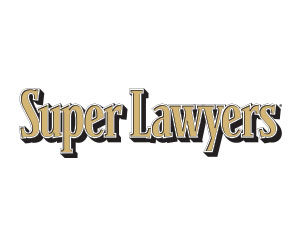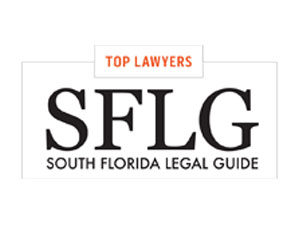$5.5M
$5.1M
$4.2M
$2.9M
$2.8M
$2.5M
$2.4M
$2.2M
Car accident victims deserve to be fully and fairly compensated for their injuries. Oddly enough, it is usually the most seriously injured crash victims who have to fight the hardest for compensation. That's partly because insurance companies enlist lawyers to vigorously defend the case while looking under every rock for anything they can use as leverage to minimize their exposure. Too often, they leverage the seriously injured victim's inability to work and pay their bills by dragging the case out with calculated delay tactics to create economic pressure that may help them get the case settled cheaply. The car accident lawyers at Hannon Legal Group have a long track record of successfully representing seriously injured car accident victims in Miami and throughout Florida. We pride ourselves on being willing to devote significant resources to achieving the best possible results for our clients. We have recovered millions of dollars in compensation for the victims of serious auto accidents including winning one of the largest personal injury jury verdicts in the state in 2017.
Car Accident Law: Types of Accidents
There are many different types of car accidents. Our firm handles all types of Florida motor vehicle accident cases including those involving:
- Head-On-Collisions
- Side Impact Collisions
- Rear-End Collisions
- Hit-and-run Accidents
- Failure to Yield Accidents
- Drunk Driving Accidents
- Uninsured and Underinsured Motorist Claims
- Intersection Accidents
- Commercial Truck Accidents
- Distracted Driving Accidents
- Buses, Motorcycles, and Trains
- Rollover Accidents
Florida Presumption of Fault
Most people are aware of the fact that when a car is hit from behind, the driver who rear-ends another vehicle is presumed to be at fault for causing the accident. However, the law also allows the negligent driver to rebut or disprove this presumption by showing that the crash was not caused solely by her negligence. Insurance companies are always looking for a way to shift the blame. If they are successful, the number of damages that can be recovered by the injured victim will be reduced. It is important to consult with an attorney who is experienced in dealing with these issues and understands the tactics that the insurance company may use in defending a rear-end collision lawsuit.
The U.S. National Highway Traffic Safety Administration (NHTSA) reports that over 6.3 million police-reported auto accidents occurred in the United States in 2003. Almost one-third of those car accidents resulted in an injury to a driver, passenger, or pedestrian and over 38,000 resulted in at least one fatality.
According to the Florida Department of Highway Safety and Motor Vehicles (FLHSMV), the statewide and countywide accidents rates are no less alarming -- in 2018, there were 166,565 crashes involving injury, 2,919 with fatalities; in Miami-Dade County alone there were 64,122 car accidents, 21,036 of them being injury crashes.
Car Accident Causes
Automobile accidents may occur for a variety of reasons, but almost all of them involve some degree of negligence. While driver error is the most common cause, automobile accidents may also be caused by defective products like tires (eg. tread separation), airbags, seat belts or seat backs; negligently maintained street lights; negligently prescribed drugs; negligently serving alcohol to persons who are visibly intoxicated or to minors; negligently performed automotive repairs or negligent automobile maintenance.
Head-On Collisions
One out of every fifty automobile accidents involves a head-on collision. Although this number may seem low, nearly one out of ten motor vehicle accident fatalities is the result of a head-on crash. Our Miami, Florida car accident lawyers know that the injuries arising from head-on crashes can be life-altering and often fatal. This type of accident happens too frequently in Florida, especially since they are almost always preventable.
Head-on collisions occur when the front end of one car collides with the front end of another car while the two vehicles are traveling in opposite directions. These types of car accidents are particularly dangerous because head-on collisions generate a massive amount of force on impact. Although some of this force may be absorbed by the front bumpers of the cars involved, if an oncoming vehicle is traveling at a high rate of speed, or if the road is not well-lit, the other driver may have little time to react and steer out of harm’s way.

We have found that the most common cause of head-on collisions is driver distraction. Drivers may be distracted by many things including driving while texting or talking on a cell phone. Teenage drivers are often distracted by other teens in the car. Examples of head-on collisions include a driver who negligently crosses the median into oncoming traffic, a driver who fails to read the “wrong way” sign on a highway entrance ramp, a driver who drifts into oncoming traffic when negotiating a curve, or a driver who is under the influence of prescription drugs or alcohol. The prevalence of smartphones and the ability to check email and send text messages on the go, has only added to the high number of head-on collisions.
Victims of head-on collisions may file a personal injury or wrongful death lawsuit in order to obtain compensation for their injuries. Compensation may be recovered for past and future medical bills, lost wages, pain and suffering, and other damages as provided by Florida law.
Side Impact Collisions
Side impact crashes accounted for 27 percent of all vehicle occupant deaths in 2009. Second only to head-on collisions, side impact crashes are the most deadly type of car accidents occurring on the roads today.
Also known as T-bone crashes, side angle crashes or broadside collisions, side impact collisions happen when one car collides into the side of another. Most of these motor vehicle accidents occur at very high rates of speed at busy intersections when someone runs a red light or fails to stop at a stop sign. When an SUV, pickup truck or tractor-trailer is involved in a side impact collision with a smaller vehicle, the results can be particularly catastrophic, often fatal.
Because the sides of an automobile lack the same protection as the front or rear, being hit from the side leaves passengers largely unprotected and particularly vulnerable to severe bodily injury and death. Side impact airbags, although available on some car models, do not come standard on most vehicles.
Some vehicles do not even provide the occupants with the level of protection that is standard in the automobile industry. When serious injury or death results from a manufacturing or design defect, a product liability lawsuit may be filed on behalf of the injured victim or the estate of a deceased victim.
Victims of side impact crashes may be able to receive substantial compensation for their injuries by filing a personal injury or wrongful death lawsuit a product defect lawsuit. Victims may be able to recover compensation for medical bills, lost wages as well as for pain and suffering.
Rear-End Collisions
Rear-end collisions are some of the most common types of car accidents on the roads today. This type of accident occurs when the front end of an automobile hits the back of the car in front of it. Although many of these collisions happen at relatively low speeds, the impact can still cause serious bodily injury to the occupants.
There are many reasons that rear-end crashes occur. The most common cause is driver inattentiveness or distraction, whether due to reading text messages, talking on a cell phone, conversation/ argument with a passenger, checking e-mail, use of navigation system or radio. Tailgating and racing can also result in a rear-end collision among other causes.
Injuries most commonly associated with low-speed rear-end collisions include damage to the soft tissues of the body such as sprains or strains to the muscles supporting the spinal cord, injuries to the inter-vertebral discs (Herniated disc or HNP), spinal cord injuries and closed head injuries, which can result in a traumatic brain injury (TBI) / brain damage and permanent disability. When the accident is the result of a high speed impact to the rear, the injuries are often very serious and even fatal.
Hit and Run Accidents
Hit-and-run accidents are some of the most devastating types of car accidents occurring on the roads today. Not only do victims suffer the physical injuries resulting from a collision, they suffer additional trauma from knowing that another driver could flee the scene and leave them to suffer or even die on the side of the road. Drivers don't usually leave the scene of a serious crash unless they were intoxicated or in some cases, they are wanted by police for an unrelated crime they committed. In many cases, even if the hit-and-run driver is located, most of these drivers are uninsured, literally adding insult to injury for accident victims.
Uninsured and Underinsured Motorist Insurance Coverage
If you or someone you know have been involved in a motor vehicle accident with an uninsured or underinsured driver, you may still be able to obtain compensation for your injuries if you or a relative you live with have uninsured motorist insurance coverage on your automobile insurance policy. Uninsured motorist coverage is an optional coverage in Florida that allows accident victims to make a claim under their own insurance policy for compensation for injuries caused by a negligent uninsured or underinsured driver up to the limit stated in the policy.
Compensation may be recovered for the same categories of damages available when the claim is against the at-fault driver: medical expenses, lost earnings, pain and suffering, disability and for the wrongful death of a family member. In the case of an underinsured driver, the victim's UM/UIM policy may cover the balance of the value of her injuries not covered by the underinsured driver's policy. For example, if a negligent driver has only $10,000 of liability insurance coverage and the injured victim suffered injuries valued at $1 million, the victim's insurance company may be responsible for paying the balance up to the policy limits. It is not always clear to the injured victim what her policy limits are since policies can be confusing in the way they describe the coverages. UM/UIM coverage can be "stacking" or "non-stacking" and can have a single limit or one limit per person and another per accident limit.
Too often in Florida, when a claim is made for UM/UIM benefits, the insurance company attempts to deny coverage or to minimize the victim's injuries or to blame the victim in an attempt to save money. Insurance adjusters know the laws that apply to motor vehicle accidents and insurance policies and use them to put victims at a disadvantage.
In an uninsured motorist case, the law suit is filed against the victim's insurance company. That is one of the only times a jury will be aware that there is insurance available to pay the damages. When an injured victim sues the at-fault driver, the jury is not allowed to know that he has insurance. This can unfairly result in jurors feeling sympathy for the at-fault driver if they think he will have to bear the financial burden of a large verdict personally.
Insurance Company Bad Faith?
There are two kinds of bad faith claims: first party and 3rd party claims. Both types stem from the duty an insurance company owes its insured.
First party claims arise when you have to make a claim against your own insurance company. Third party claims arise when your complain is about the practices of the at-fault driver's insurance company.
If your insurance company treats you unfairly or fails to perform the duties owed to an insured as a business practice, it may considered to have acted in "bad faith". The policyholder may be able to bring a bad faith claim against the insurance company. Bad faith claims usually involve allegations that the insurer acted in a way that was dishonest, unethical or fraudulent in some way. Sometimes it can be based on the insurer's failure to timely respond to a claim.
In third party cases, the insurance company of the at-fault driver may be required to pay a verdict that exceeds the insurance policy limits. They may be required to pay the insured's attorney's fees as well. Bad faith usually results in a second law suit being filed after an excess verdict is won in the accident case.
Florida No-Fault Insurance
Florida is what is known as a “no-fault state.” Under Florida’s no-fault law, drivers are only required to have a minimum of $10,000 of Personal Injury Protection (PIP or “no fault insurance”) insurance coverage and a minimum of $10,000 of Property Damage Liability insurance coverage. The PIP or “no fault” coverage is there to pay for a portion of an insured’s emergency medical treatment resulting from a motor vehicle crash. This coverage is not dependent on who was at fault in causing the accident – thus the name “no fault.” One result of these required coverages is that even if a negligent driver has the minimum insurance coverage required by law, there may still be insufficient coverage to fully compensate accident victims for their injuries because, unlike many other states, bodily injury liability insurance is not required by Florida law.
Duty to Stop, Report Information and Render Aid
Florida law imposes a duty on people who have been involved in a car accident to remain at the scene and exchange information with the other driver. If a party appears to be injured, the law imposes an additional duty to render reasonable aid and call for emergency help if necessary. When a driver leaves the scene without stopping and providing information, and the accident resulted in personal injury or death to another person, the driver has committed a third degree felony, punishable by significant jail time and fines.
Because many hit-and-run drivers flee the scene for fear of being caught driving under the influence of drugs or alcohol, criminal proceedings often accompany a civil lawsuit. The injuries suffered by victims of these accidents are often severe, life-altering and even fatal.
However, even hit-and-run victims may be able to seek compensation for injuries, pain and suffering, medical bills and lost wages. Accident victims with uninsured motorist coverage may be able to make a claim under their own insurance policy. If the hit-and-run driver was driving a work vehicle at the time of the accident or was on a work errand, an accident victim may seek compensation for injuries by filing a lawsuit against the employer or owner of the vehicle. Victims of a hit-and-run accident who have suffered personal injuries or family members of those killed in a hit-and-run accident may also be able to bring criminal charges against the driver, if the person can be located by police.
Failure To Yield Accidents
Navigating Florida’s roads and highways can be treacherous. Drivers must make split second decisions about who has the right of way, and who must yield to oncoming drivers. Unfortunately, many Florida drivers fail to obey the traffic laws or to notice yield signs governing who has the right of way. This results in a high number of failure to yield accidents each year.
In 2010, there were nearly 28,000 failure to yield accidents in Florida, according to the Florida Department of Highway Safety and Motor Vehicles. Failure to yield accidents were also the third leading cause of driving fatalities in the state in 2010. In the same year, over 20,000 of these accidents resulted in bodily injury.
Failure to yield accidents commonly occur at intersections or where cars are permitted to merge onto a highway. Another frequent cause is a driver’s failure to yield to oncoming traffic when making a left turn. Accident victims may suffer a wide range of injuries, including traumatic brain injury, spinal cord injury or fractures. The injuries tend to be more serious when high speeds are involved. Many of these crashes, as the statistics above illustrate, can be fatal. However, victims may be able to recover compensation for medical expenses, lost wages, disability, brain injury and the death of a family member.
Failure to yield cases are often hard fought and can be highly technical. They routinely require expert testimony from accident reconstruction engineers and human factors experts. This is especially true when the case is not a case of clear cut liability. For example, sometimes the party who had the right of way could not avoid hitting the driver who was required to yield. This driver is still the accident victim, because the other driver’s failure to yield to oncoming traffic is what caused the accident. In cases like these, it may be necessary to prove who was at fault or who failed to yield. Sometimes the legal responsibility for an accident may be shared by the parties involved. For these reasons, it is imperative to contact a car accident attorney who has experience litigating failure to yield cases.
Need Help? Contact Our Car Accident Lawyers
If you have been injured or lost a family member in a car accident, contact an experienced accident lawyer at Hannon Legal Group today for a FREE evaluation of your case and to learn if you can receive compensation for your injury or loss.



